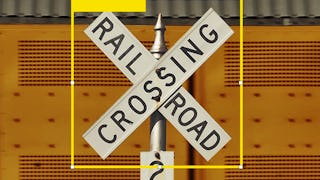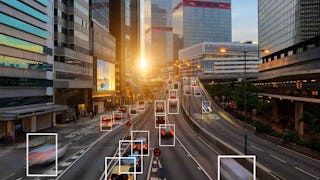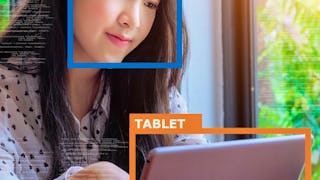In the third and final course of the Computer Vision for Engineering and Science specialization, you will learn to track objects and detect motion in videos. Tracking objects and detecting motion are difficult tasks but are required for applications as varied as microbiology and autonomous systems. To track objects, you first need to detect them. You’ll use pre-trained deep neural networks to perform object detection. You’ll also use optical flow to detect motion and use the results to detect moving objects.

Enjoy unlimited growth with a year of Coursera Plus for $199 (regularly $399). Save now.

Object Tracking and Motion Detection with Computer Vision
This course is part of multiple programs.



Instructors: Amanda Wang
8,667 already enrolled
Included with
(32 reviews)
Recommended experience
What you'll learn
Use pre-trained deep neural networks like YOLO to perform object detection
Use optical flow to detect motion & moving objects
Perform multi-object tracking to count, track, & determine the direction of objects
Skills you'll gain
Details to know

Add to your LinkedIn profile
8 assignments
See how employees at top companies are mastering in-demand skills

Build your subject-matter expertise
- Learn new concepts from industry experts
- Gain a foundational understanding of a subject or tool
- Develop job-relevant skills with hands-on projects
- Earn a shareable career certificate

There are 4 modules in this course
What's included
4 videos5 readings1 assignment1 app item1 discussion prompt
What's included
3 videos3 readings2 assignments2 app items
What's included
3 videos2 readings2 assignments1 discussion prompt
What's included
3 videos4 readings3 assignments1 discussion prompt1 plugin
Earn a career certificate
Add this credential to your LinkedIn profile, resume, or CV. Share it on social media and in your performance review.
Offered by
Explore more from Electrical Engineering
 Status: Free Trial
Status: Free TrialMathWorks
 Status: Free Trial
Status: Free TrialMathWorks
 Status: Free Trial
Status: Free TrialMathWorks
 Status: Free Trial
Status: Free TrialColumbia University
Why people choose Coursera for their career




Learner reviews
32 reviews
- 5 stars
87.87%
- 4 stars
6.06%
- 3 stars
0%
- 2 stars
3.03%
- 1 star
3.03%
Showing 3 of 32
Reviewed on Mar 12, 2024
Perfect course to get hands-on experience of applications of computer vision techniques to solve a problem.
Frequently asked questions
Yes. A free license is available to learners enrolled in the course. You must have a computer capable of running MATLAB. You can view the system requirements here.
To access the course materials, assignments and to earn a Certificate, you will need to purchase the Certificate experience when you enroll in a course. You can try a Free Trial instead, or apply for Financial Aid. The course may offer 'Full Course, No Certificate' instead. This option lets you see all course materials, submit required assessments, and get a final grade. This also means that you will not be able to purchase a Certificate experience.
When you enroll in the course, you get access to all of the courses in the Certificate, and you earn a certificate when you complete the work. Your electronic Certificate will be added to your Accomplishments page - from there, you can print your Certificate or add it to your LinkedIn profile.
More questions
Financial aid available,







